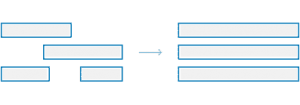Interference is currently the largest impediment to increasing the capacity of cellular networks. Collision Communications uses sophisticated signal processing techniques to drastically reduce interference or advantageously leverage it, leading to tremendous improvements to the network.

Customized software
Lorem ipsum dolor sit amet, consectetuer adipiscing elit. Morbi commodo, ipsum sed pharetra gravida, orci magna rhoncus neque, id pulvinar odio lorem.

Customized solutions
Lorem ipsum dolor sit amet, consectetuer adipiscing elit. Morbi commodo, ipsum sed pharetra gravida, orci magna rhoncus neque, id pulvinar odio lorem.

Software solutions
Lorem ipsum dolor sit amet, consectetuer adipiscing elit. Morbi commodo, ipsum sed pharetra gravida, orci magna rhoncus neque, id pulvinar odio lorem.
Understanding the Complex Problems of Interference
Interference is the major limiter of modern cellular networks, resulting in reduced capacity, compromised Quality-of-Experience, and high costs of operation.
Networks’ Inefficiencies Are Costly
Traditionally, industry has focused on avoiding interference — this is fundamentally suboptimal. As capacity demands have surged and spectrum continues to come at a massive expense, avoiding interference has become too costly.
Industry Solutions Fall Short
Industry’s approaches to solving the capacity demands (e.g. more antennas, denser network etc.) while effective at increasing capacity, are costly and further necessitates a need for advanced signal processing to take full advantage of them.
Industry’s state-of-the-art approaches to address interference fall well short of what is possible.
There is opportunity to significantly improve network performance through better signal processing.
How Do We Solve for Interference?
Collision Communications builds transceiver technology to maximally exploit interference. Rather than trying to avoid interference or treat it as noise, it is processed out, leveraged, or advantageously created. By doing such, Collision Communications can achieve near-optimal interference suppression and superior downlink beamforming, allowing for networks to operate at a much higher spectral efficiency. This translates into networks with increased capacity, increased coding rates, better QoE, improved handset battery-life and lower TCO. Collision Communications is able to achieve this by employing the following approaches:



